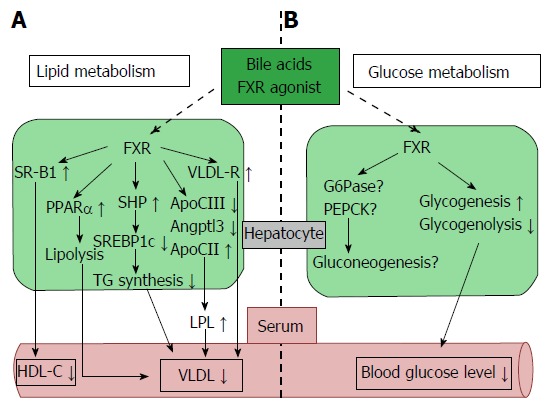Figure 2.

Farnesoid X receptor-dependent metabolic regulation in the liver. Hepatic FXR signaling regulates lipid and glucose metabolism. A: FXR signaling reduces lipogenesis (SREBP1c) and induces fatty acid β oxidation (PPARα) and plasma TG clearance (LPL and VLDL-R), resulting in decreased plasma VLDL levels. Plasma HDL-C uptake is also increased by FXR and SRB1 activity; B: FXR signaling up-regulates glycogenesis, down-regulates glycogenolysis, and reduces blood glucose levels. Hepatic FXR signaling is also associated with gluconeogenesis, but the controlling mechanism is still unclear. Angptl3: Angiopoietin-like protein 3; ApoCII/CIII: Apolipoprotein-CII/CIII; FXR: Farnesoid X receptor; G6Pase: Glucose-6-phosphatase; HDL-C: High density lipoprotein-cholesterol; LPL: Lipoprotein lipase; PEPCK: Phosphoenolpyruvate carboxykinase; PPARα: Peroxisome proliferator-activated receptor α; SR-B1: Scavenger receptor-B1; SREBP1c: Sterol regulatory element-binding protein 1c; TG: Triglyceride; VLDL-R: Very low density lipoprotein-receptor.
